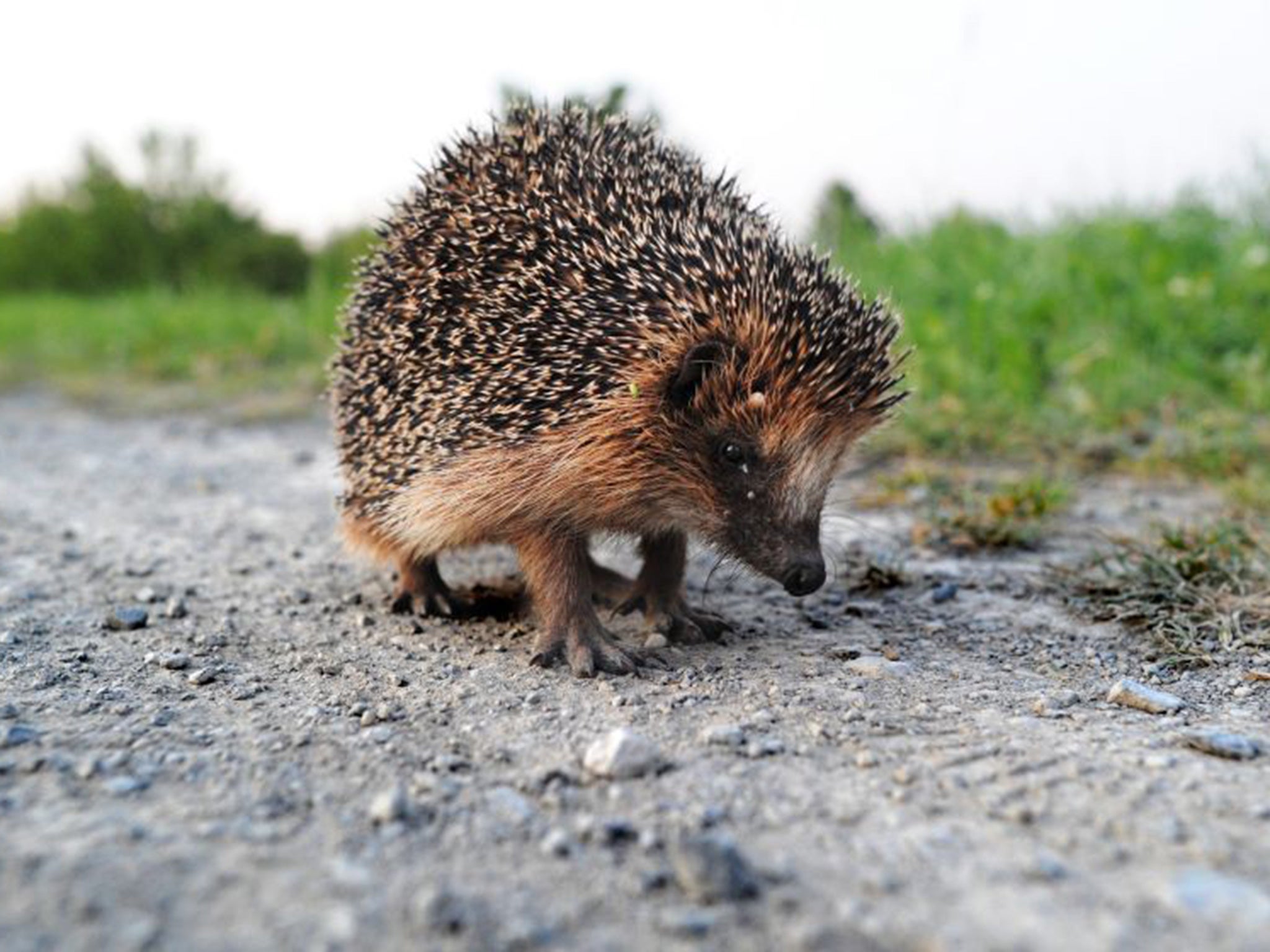Hedgehog population plummeting 'thanks to urban development and rise in badger numbers'
National survey estimates rural hedgehog numbers have fallen by at least 50 per cent in 15 years

Britain’s hedgehog population has dropped below a million for the first time, thanks to rapid development and the growing number of badgers, according to a new study.
The first national survey since 2011 estimates that hedgehog numbers have fallen by at least 50 per cent in rural areas in 15 years. The urban population fell by as much as a third over the same period, according to the report.
Breakneck development, especially in London, is reducing hedgehogs’ habitat – a problem compounded by the move to “tidy, sterile, fenced-in gardens”, which in effect shut them out – according to the report by the British Hedgehog Preservation Society and the People’s Trust for Endangered Species (PTES).
The report’s authors call for gardeners and developers to give greater consideration to hedgehog habitats.
How to make a home for hedgehogs
- Grow plants that attract the invertebrates that hedgehogs eat, such as bluebells, primroses and sweet briar.
- Leave areas of your garden wild. And don’t erect fences.
- Leave out food. Hedgehogs enjoy boiled eggs, chopped nuts, sultanas, crushed cat biscuits and fresh water.
- Don’t leave out milk or bread.
- Avoid using slug pellets and other garden chemicals.
In rural areas, the intensification of agriculture and growing field sizes are reducing the prevalence of hedgerows and grasslands where hedgehogs live. A rise in badger numbers, especially in the south of England, is also hitting rural populations, as they are the animal’s principal natural predator.
“These figures are pretty disturbing; it’s pretty horrific really,” said Henry Johnson, PTES’s hedgehog officer. “Hedgehogs need large areas of habitat and the urban environment is increasingly fragmented by various fencing, infrastructure and new developments – and the change of suburbia from green to grey.
“In rural areas, there is less food out there. Worms, slugs, earwigs, millipedes, caterpillars and beetles are falling as the way we farm reduces plant diversity,” Mr Johnson added.
He acknowledges that badgers play a role, although he is wary of blaming them for fear of encouraging the Government’s controversial badger cull – introduced to help reduce the spread of bovine tuberculosis among cattle.
“I’m not saying it’s nothing to do with badgers, but it’s a simplification to point the finger at them alone. However, they are the main natural predator, and in certain parts of the country, particularly where you have very high densities of badgers, it will inevitably impact on rural hedgehog populations,” he says.
Hedgehogs mostly feed on invertebrates but they also eat birds’ eggs and the decaying flesh of dead animals.
Data on hedgehog numbers before 2000 is sparse, but they are thought to have been declining for decades. The last detailed survey, in 2011, found that at least a quarter of Britain’s hedgehogs had been lost in the previous decade.
Subscribe to Independent Premium to bookmark this article
Want to bookmark your favourite articles and stories to read or reference later? Start your Independent Premium subscription today.

Join our commenting forum
Join thought-provoking conversations, follow other Independent readers and see their replies